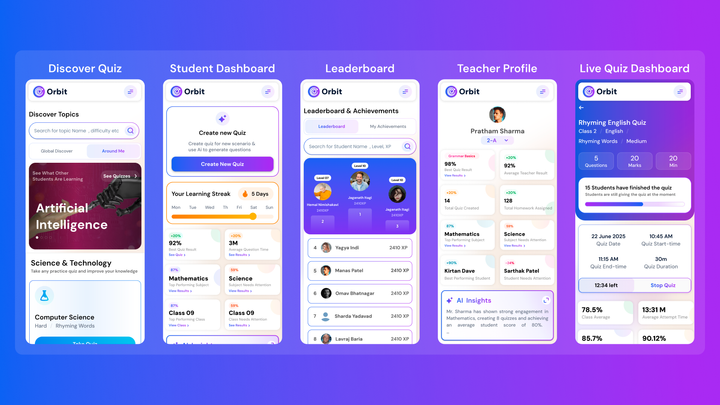Inside Orbit AI: The Tech Powering Smarter Learning and Smarter Quizzes
How does Orbit AI generate adaptive, pedagogically sound quizzes? Explore the architecture, algorithms, and design principles behind Inforida’s latest intelligent learning engine—launching June 20.

Introduction
Assessment lies at the heart of effective pedagogy—yet designing, delivering, and refining high-quality assessments remains a persistent challenge in education. As artificial intelligence continues to reshape learning ecosystems, the question is not whether AI should assist educators, but how it can do so responsibly and effectively.
Orbit AI was conceived as a response to this challenge. It embodies a rigorous design philosophy: augment teacher capacity without compromising pedagogical soundness or educator agency. Today, we examine the architecture and principles that make this possible.
The Core Design Challenge

Building a trustworthy AI quiz engine required addressing several key imperatives:
- Pedagogical alignment: Content must reflect curricular goals and cognitive rigor.
- Personalization: Assessments must adapt to individual learner trajectories.
- Transparency: Educators must understand, review, and control AI-generated content.
- Trustworthiness: The system must maintain consistency, accuracy, and fairness.
Meeting these demands necessitated a multi-layered architecture informed by both AI innovation and deep collaboration with educators.
Orbit’s AI Architecture

At its core, Orbit’s quiz engine employs a topic-to-question generation pipeline leveraging advanced language models fine-tuned for educational contexts.
Key components include:
- Content Classifier: Ensures generated items align with intended learning outcomes and curricular standards.
- MCQ Generator: Produces diverse, high-quality questions with valid distractors.
- Adaptive Pacing Engine: Optimizes quiz frequency and sequencing based on student performance patterns.
- Feedback Loop: Continuously refines content quality and pacing through performance analytics.
Human-Centered AI Design

Orbit’s design process foregrounds teacher agency. Educators can review, edit, and approve all generated content, ensuring alignment with instructional goals and classroom culture. The platform prioritizes transparency and interpretability over black-box automation.
Moreover, Orbit’s user interface was crafted with simplicity in mind—enabling teachers to harness advanced AI capabilities without requiring technical expertise.
Conclusion
As AI continues to evolve, its role in education must be guided by principles of augmentation, transparency, and trust. Orbit AI exemplifies this approach, providing educators with a powerful, adaptable tool for enhancing assessment without eroding pedagogical autonomy.
Launching June 20, Orbit represents not merely a product launch, but a contribution to the broader discourse on responsible AI in education. We invite educators, technologists, and learning scientists to engage with this evolving conversation—and with Orbit itself.




